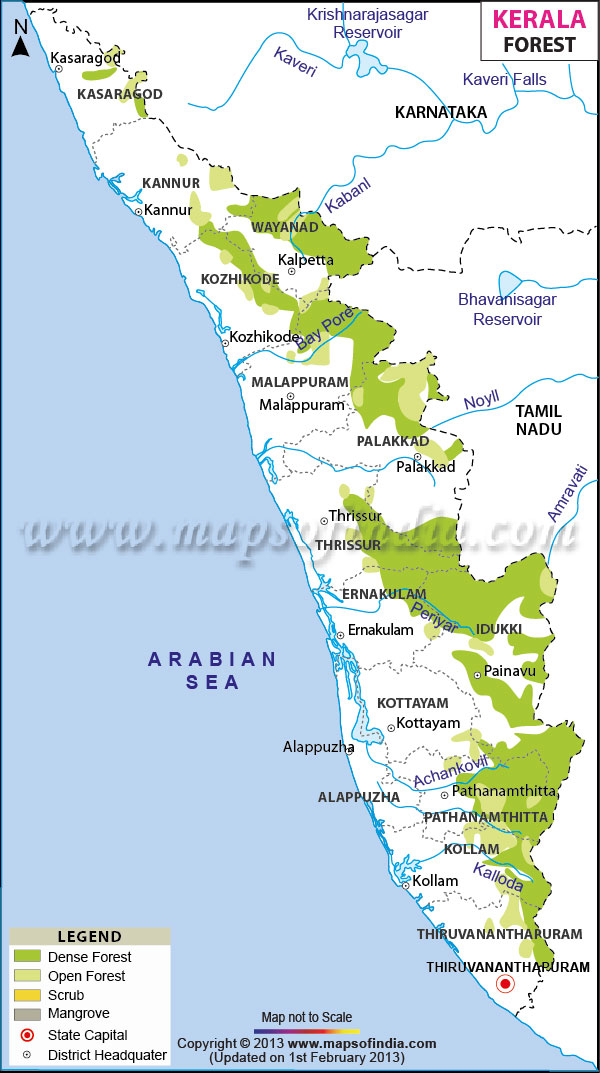The natural vegetation of Kerala comprises 3,872 flowering plants including 900 plants of great medicinal value which are used in Kerala Ayurvedics and other healing purposes. Most of these species are endemic to Kerala. The forested regions with an area of 9,400 km2 comprises tropical wet evergreen partly-evergreen forests with thick undergrowth in the lower and mid altitudes, tropical damp and arid deciduous forests in the middle altitudes plus mountainous subtropical and temperate (shola) forests in the precipitous hills. Almost 24% of Kerala is wooded.
The windward mountains of Eastern Kerala enclose tropical wet as well as dry forests of Western Ghats .Indian rosewood, mullumurikku, anjili and caussia other thousand species of trees are found in these. Other plants include bamboo, wild cardamom, the Calamus Rattan Palm (a kind of climbing palm), wild black pepper and fragrant Vetiver grass.
Planted / Cultivated Vegetation - Kerala basically thrives on agriculture. The main crops are paddy, coconut, pepper, cashew, cassava and plantation crops like rubber (introduced by the Dutch in Kerala) and a variety of Bananas. Coconut is the chief plant that forms the chief source of income and grows in plantations, courtyards of people and along the coastlines. Paddy is the staple crop of Kerala and is grown conveniently due to the supply of adequate water and soil and Alappuzho of Kerala is known as the rice bowl of the state for highest rice production.
The cash crops are tea and coffee, spices like pepper, cardamom, ginger, cloves and cinnamon, areca nut, nutmeg, vanilla, cashew nut and so on. Cashew nut (introduced by the Portuguese after discovering India in 1978) forms the most important cash crop.
Last Updated on : November 13, 2025
